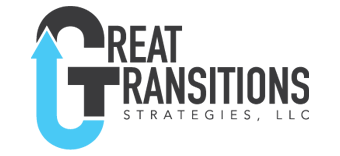“I have heard colleagues in another organization talk about using group coaching as a method for leadership development. How does it work compared to other leadership development processes?”
This is a typical question from leaders unfamiliar with group coaching. I will lay out the basics for you.
The Bottom Line up Front:
Group coaching is a tool used to develop individuals in a cohort format. Individuals develop, the cohort potentially builds a culture, and it is less costly than one-on-one coaching. It can be done in the organization with less time away and has an individual focus.
Overview
Think of a group of individuals whose leadership you want to develop. It may be high potentials at the same level. What are the typical methods you might use? A course, series of workshops, conferences, individual coaching, and mentoring are common choices.
Now calculate the cost of each of the above in expenses and time away. As we dig into group coaching keep those number in mind. Here is the structure of a typical group coaching engagement.
Group coaching consists of a cohort focused on their own leadership development goals. Those goals are achieved through a series of group, individual, and peer-coaching sessions coupled with readings and reflection over a period of 4-6 months. Think of a cohort of 6-12 participants at roughly the same level in your organization.
This could be a group of new hires onboarding or high potential leaders across your organization.
The coaching begins with each participant having an individual session with the coach to establish the participant’s goals. Two more individual coaching sessions will occur during the program, one at the midway point and one at the conclusion of the program.
Over the program there will be group coaching sessions that will cover topics ranging from creating a leadership vision, individual assessments, leadership skill development, values clarification, personal mission statement, developing coaching skills, and fostering supportive relationships, to name a few. Group sessions meet every two or three weeks. Between the group coaching sessions participants will complete focused readings, take assessments, complete actions, and participate in a peer coaching session.
A common group coaching engagement is for 6 sessions. With a 3-week interval between meetings that would take approximately 5 months.
Overall every participant will receive the following:
3- one-on-one coaching session with a professional coach
4 – one-on-one peer coaching sessions
6 – two-hour group coaching sessions
That is 9 coaching sessions (6 group and 3 individual for 15 total hours) with a professional coach. I also teach peer coaching with each cohort. Between sessions peers meet for an hour to coach each other to practice coaching skills and have an accountability partner.
The Benefits
The leaders in the group are developing themselves based on their own goals and aspirations. In a cohort they build key relationships with the other participants. This has proven to be very valuable to the organization. Envision the group you are considering to participate in group coaching. What would be the benefit of those leaders building solid relationships?
Other considerations are the cost and time. Group coaching can be 30-40% less than one-on-one coaching for the same number of participants. Time; having group coaching sessions in the workplace for several hours a month reduces travel costs and more importantly time away.
This is leadership development done in the context of the work environment of the participants. Very valuable.
Consider adding group coaching to the mix of leadership development methodologies you are using today.



